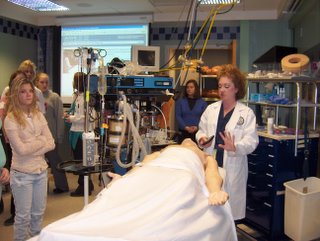 On November 14th, the Institute of Politics convened a group to discuss the workforce development challenges facing the healthcare industry. The speakers made many interesting points. Many speakers emphasized the fact that workforce availability and quality impacts quality of care. There were also numerous remarks about the the skill shortages that exist across a broad range of occupations. (Workfore shortages go far beyond just nursing.) Many speakers also commented on the need for early and continuous career education. Finally, the need for collaboration across divergent groups is essential. No singular institution is going to fix the problem.
Of course, being a researcher -- I walked away from the event with more questions. Any answers out there?
On November 14th, the Institute of Politics convened a group to discuss the workforce development challenges facing the healthcare industry. The speakers made many interesting points. Many speakers emphasized the fact that workforce availability and quality impacts quality of care. There were also numerous remarks about the the skill shortages that exist across a broad range of occupations. (Workfore shortages go far beyond just nursing.) Many speakers also commented on the need for early and continuous career education. Finally, the need for collaboration across divergent groups is essential. No singular institution is going to fix the problem.
Of course, being a researcher -- I walked away from the event with more questions. Any answers out there?
- Nancy Zionts’ remarks emphasized the connection between workforce development and quality of care. If quality of care is the ultimate goal – which workforce development strategies are the most effective?
- Most of the panelists focused on building the pipeline of future workers. However, the PA Workforce Investment Board and numerous national groups have identified constraints in the educational pipeline such as a lack of faculty and clinical sites. How can the region overcome these pipeline problems?
- Jill Clements remarks briefly mentioned the impact of regulation on the healthcare industry. Credentialing, regulation and reimbursement policies have a major impact on the sector and the workforce. What do legislators need to know about how these regulations impact workforce quality and availability?
- Kathy Malloy and Jay Cannon mentioned the challenges of keeping pace with the rapidly changing educational requirements of the healthcare industry. One innovation that is reshaping the industry is the movement towards electronic health records. How does this innovation increase skill requirements for the workforce? Are our educational institutions prepared to meet this challenge?
- Steve Herzenberg discussed the need for a collaborative approach to workforce development. Are the region’s healthcare providers working collaboratively towards addressing workforce challenges or is it still a “go-it-alone” strategy?



